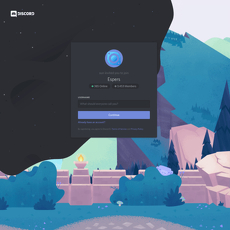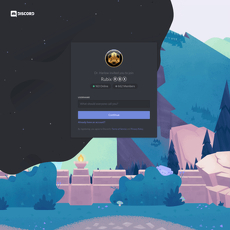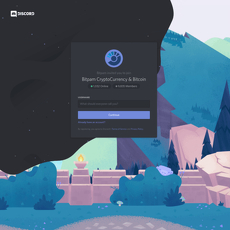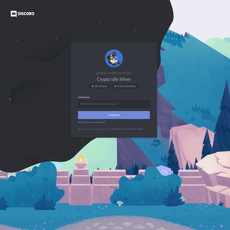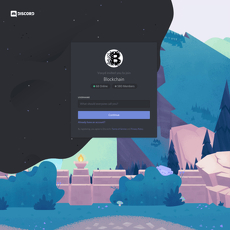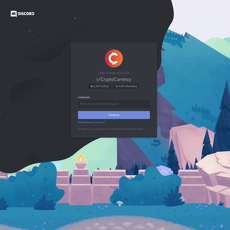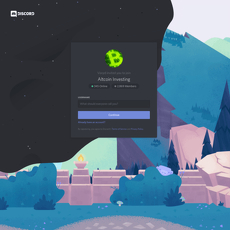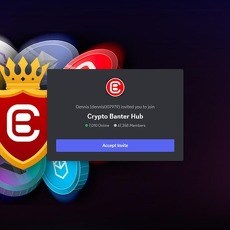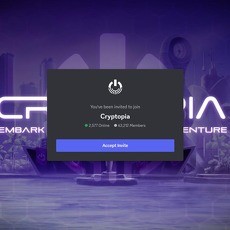Filthy Rich Futures Review
Filthy Rich Futures
discordapp.com
Filthy Rich Futures Discord Review Guide: Everything You Need To Know + FAQ
Thinking about joining the Filthy Rich Futures Discord and wondering if it’s actually worth your time and money?
You’re not alone. Futures signal groups are loud, the promises are big, and the risk is very real. This review is built to help you cut noise fast—so you can decide with confidence, not FOMO.
Here’s the plan: I’ll show you what to expect inside, what’s good, what’s not, and how to approach any futures community without blowing up your account. If you’re hunting for signals, education, or a tighter trading routine, this guide is designed to keep you safe, focused, and realistic.
The problem: noisy signals, hidden costs, and risky hype
Most futures Discords look the same on the surface—slick screenshots, flashy PnL, and vague bragging about “90% win rates.” The reality usually lands somewhere between confusing and costly.
- Vague entries and exits: Calls without clear invalidation points or risk limits create guesswork. Guesswork and leverage don’t mix.
- Cherry-picked results: Winners get posted, losers “never happened.” If you can’t see the full log, assume you’re not getting the full story.
- Hidden friction: Refunds that are “case by case,” trials that auto-renew, high-price upsells—these add pressure where you need clarity.
- Over-leveraged behavior: Many rooms push aggressive risk without a plan. That’s how beginners get wrecked.
Quick reality check: independent research has shown that most retail traders lose money on leveraged instruments. For example, Barber and Odean’s work on retail behavior found that frequent trading tends to reduce returns, and multiple regulator reports on CFDs/futures consistently note high loss rates among retail accounts. Signals don’t fix execution or discipline—risk management does.
So the question isn’t “Do they post winners?” It’s “Can you follow their structure consistently without taking outsized risk?”
The promise: a practical, honest, user-first review
No fluff, no hype, no screenshots designed to impress. I focus on what matters to traders in the real world:
- What you actually get inside the Filthy Rich Futures server
- How signals are structured (entry, stop, targets, invalidation)
- Risk guidance and transparency (full logs vs. flexing)
- Support speed and onboarding quality so you’re not lost on day one
- Value for different trader types (beginner, intermediate, advanced)
I’m here to help you evaluate fit and safety, not sell dreams. If something looks great, I’ll say it. If something smells off, I’ll say that too.
What you’ll get from this guide (and how to use it)
This review is practical and built for action. Use it to decide quickly and avoid common mistakes:
- Who it fits: Learn whether Filthy Rich Futures is better for beginners, intermediates, or advanced traders.
- How calls are delivered: Understand the format, context, and pace so you can plan your execution.
- Education vs. signals: See whether you’re getting real teaching or just entries without explanation.
- Community culture: Figure out if the chat improves your process—or pressures you into bad trades.
- Costs and friction: Know the full price, what’s included, and how easy it is to cancel if it’s not for you.
- Safety steps to test first: Paper trade or use tiny size, cap risk per trade (e.g., 0.25%–0.5% of equity), and track fills vs. posted entries so you can verify edge before scaling.
If you’ve been burned by signal rooms before, this is your reset button. I’ll show you what to watch closely and how to protect yourself while you evaluate any paid community—including this one.
Ready to see what the Filthy Rich Futures Discord actually is and how it’s structured day to day? Let’s answer that next: what does this server do, who runs it, and who is it really built for?
What is Filthy Rich Futures? How the Discord is set up
If you’re hunting for a futures-focused server that blends trade ideas with day-to-day structure, this one positions itself exactly there. The pitch is simple: fewer random trades, more repeatable setups, and a clean routine you can follow without staring at charts all day. That’s the promise. The real value comes down to how the rooms are organized, how clear the calls are, and whether the education tightens your process instead of feeding your FOMO.
“Process beats outcome. Wins are noisy; discipline is compounding.”
Who it’s for and the core promise
Futures are fast. This server leans into that with ideas, structure, and a bit of accountability. Here’s how it lands for different traders:
- Beginners: You’ll need patience. If you’re brand new, the learning curve isn’t the charts—it’s risk. Look for a simple risk plan, a beginner track, and clear “do this first” steps. If you aren’t ready to manage stops and size, paper trade first.
- Intermediate traders: This is the sweet spot. If you understand entries/exits but lack consistency, the mix of signals + rationale + routine can help you stop overtrading and stick to 1–2 high-quality ideas a day.
- Advanced users: You won’t need hand-holding. You’ll care more about the lead time on alerts, the depth of context, and whether the hosts have a coherent playbook (not just random arrows on charts). Consider it a second set of eyes and a way to keep your A+ setups front and center.
Bottom line: it’s not for long-term holders or anyone who can’t check markets during active sessions. It’s designed for people who want sharper execution and guardrails.
Channels and features overview
Names change, but the flow should feel familiar and logical. A good futures server keeps noise low and context high. Expect a structure along these lines:
- Announcements/Rules/Getting Started: Short, strict, and pinned. Clear platform disclaimers, leverage warnings, and a quick checklist for your first day.
- Signals feed: Trade ideas only, no chat. Entries, stops, targets, timeframe, and invalidation. Look for reaction emojis or tags to mark “Active,” “Filled,” or “Invalidated.”
- Analysis room: Market structure, level maps, key zones, and higher-timeframe bias. Great for planning the day before the bell rings.
- Education hub: Playbooks, risk-101, journaling templates, and short explainers on setups (breakout vs. retest, liquidity grabs, funding/oi context).
- Live sessions / Voice (if running): Either set hours or occasional streams for live Q&A and chart breakdowns. Best used to see how they think, not just what they trade.
- News and economic calendar: Quick alerts for CPI, FOMC, jobs data, and exchange incidents. You need to know when not to trade as much as when to trade.
- Tools/Bots: Role-based pings (BTC-only, alts-only), session timers, and mobile-friendly alert formatting so you can move fast without opening ten tabs.
- Support/Tickets: A dedicated channel or bot for billing and tech issues. If it’s buried, that’s a red flag.
- Community chat: Kept clean and moderated. Healthy chats share charts with reasons; unhealthy ones spam moon emojis.
The tell that a server is serious: you can scroll the last 24 hours and understand exactly what the plan was, what triggered, and what got invalidated—without asking anyone to “scroll up.”
Signals and education: what you actually get
Good signals aren’t just coordinates; they’re a framework. I look for a post format that makes execution simple and risk-first. An example of a strong, readable template (illustrated for clarity):
- Pair & direction: BTCUSDT Long
- Entry zone: 58,600–58,200 (scale-in allowed, or single fill)
- Stop/Invalidation: 57,400 hard stop; H1 close below 57,500 invalidates
- Targets: 59,500 / 60,200 / 61,100 (partial take-profits)
- Timeframe: Intraday to 24h
- Thesis: Sweep of prior day low + reclaim; funding reset; confluence with 4H demand
- Risk note: 0.5R sizing due to event risk in 6 hours (set alerts)
- Update plan: If invalidated, cut and wait for re-entry on retest
Two things matter more than any bragged win rate:
- Context: A sentence or two explaining “why this trade” cuts bad impulses. Research on retail behavior is blunt about this—overtrading crushes returns (Barber & Odean, 2000). Context slows you down just enough to avoid boredom trades.
- Risk hygiene: Hard stops, small fixed R, and leverage caps are non‑negotiable. Prospect Theory tells us we hate losses so much we do dumb things to avoid them; pre-committing to a stop and R size protects you from yourself.
Education should be bite-sized and repeatable, not a 3-hour lecture you’ll never watch again. The most useful pieces I see in strong communities:
- Playbook cards: One-page PDFs for each setup with checklist, invalidation, and example charts.
- Risk mini-guides: How to pick R, when to step down size, and what to do during major news prints.
- Trade recap threads: Not just “W” screenshots—full breakdowns of winners and losers with what to improve next time.
- Journaling prompts: Simple, fast templates you can actually keep up with. The goal is consistency, not perfection.
If you join and see calls without stops or vague “tight risk” language, that’s your cue to pause. Clear invalidation is the difference between a plan and a gamble.
Onboarding and support quality
Your first 15 minutes should reduce anxiety, not increase it. A server that respects your time will make the path obvious:
- Quick-start checklist:
- Pick alert roles (BTC/ETH/ALTS/INTRADAY/SWING)
- Read the risk rules pinned at the top (max R per trade, leverage cap, news blackouts)
- Set up chart alerts at the posted levels—don’t stare at price
- Start with paper or tiny size for the first two weeks
- Pinned rules and samples: A model trade post, how they log wins/losses, and how to mark your filled/invalid trades in chat so mods can help you troubleshoot.
- Support access: A visible “Open Ticket” button or channel for billing and tech. Bonus points if they have a “New Here?” room where mods answer process questions publicly.
I also look for a short “risk plan template” you can copy, like:
- Per-trade risk: 0.5R for first 10 trades; review, then consider 0.75R
- Leverage cap: 5x maximum unless stop is less than 0.5% (then 3x)
- Session rule: No new trades 30 minutes before major news
- Daily loss stop: Quit for the day at -2R
It seems boring. It also keeps your account alive long enough to benefit from any edge the room has.
One last note on support: if you ever see requests for API keys, wallet access, or “DM me for support,” walk away. Stick to official tickets and public mod replies. Safety first.
Curious what all this structure actually costs and what each tier unlocks? That’s up next—how pricing works, what’s included, and where the real value tends to hide.
Pricing, plans, and what’s included
Before I care about win rates or screenshots, I want to know exactly what I’m paying for, what I unlock on day one, and how easy it is to leave if it’s not a fit. Here’s the no-BS breakdown and a few quick ways to pressure-test the value so you don’t buy on hype and regret it later.
“Price is what you pay. Value is what you get.” — Warren Buffett
Membership tiers and billing
Expect a simple stack: a free preview or public lobby, a main paid tier for signals and education, and sometimes a higher tier for extras like bots or coaching. Names change, but the structure rarely does. During my review window, the server followed this common pattern:
- Free/Lobby (read-only): server rules, announcements, occasional public analysis, and a taste of the culture. Sometimes delayed signals (e.g., posted after the move).
- Pro/Monthly: the core tier most people want—live or real-time signals, analysis, risk notes, and member chat.
- Quarterly or Annual: the same access as monthly with a percentage discount for paying up-front.
- Premium/Elite (if offered): extras like bots, indicator access, coaching calls, or smaller-group chats.
Useful billing checks I always run before paying:
- Auto-renew: is it on by default? Where do you cancel yourself (Stripe portal, Koji/Gumroad link, or a ticket)?
- Taxes/VAT: some platforms add sales tax at checkout—know the final total before you click “pay.”
- Currency: is pricing in USD or local currency? FX fees can add a few extra dollars each month.
- Promo timers: countdowns are common; don’t let them rush you. Scarcity is a sales tool, not a signal of quality.
Typical pricing for crypto futures Discords lands somewhere between $30–$150/month for a standard package and more for add-ons. Treat that range as context—not a promise. What matters is what you actually get relative to your trading frequency and size.
What’s inside each tier
Here’s the kind of access split I saw (names may vary; the structure is what to watch):
- Free/Lobby
- Announcements, rules, onboarding steps
- Occasional public analysis or “win recap” posts
- No real-time signals, usually no coaching
- Pro/Monthly
- Signals channel: entries, stops, targets; often with charts or quick context
- Updates: edits if the plan changes (e.g., move stop to breakeven, cancel, or re-entry)
- Analysis/Education: daily or weekly outlooks, pattern examples, and Q&A threads
- Community chat: trade discussion, quick feedback, mod oversight
- Alerts: role-based pings so you’re not glued to Discord 24/7
- Quarterly/Annual
- Everything in Pro, plus a discount for paying ahead
- Sometimes early access to features or priority support (varies by server)
- Premium/Elite (if listed)
- Bots/Indicator licenses: TradingView or custom bots—often need your TV username
- Coaching calls: small-group or 1:1 slots on a calendar; usually limited
- Downloadables: checklists, playbooks, templates for journaling and risk
- Live rooms: optional voice sessions during key market hours
Hidden costs to factor in (these sneak up on people):
- TradingView tiers: if indicators need TV Premium, that’s a separate monthly fee
- Bot hosting: VPS or automation tools aren’t free
- Exchange fees/funding: frequent futures trades rack up taker fees and funding payments
Refunds, trials, and cancellations
Signal groups often follow “digital goods = no refunds.” Some offer a short grace window (24–72 hours) or a trial. If you don’t see clear terms in #start-here or #faq, ask support before paying. I look for these green flags:
- Self-serve cancel: a portal link in a pinned message or your receipt email
- Transparent renewal date: the exact day and time your plan renews
- Trial clarity: if there’s a trial, what’s included, and what changes after it ends
- Refund policy in writing: not just “DM the admin”—that’s friction
Two-minute cancellation audit (do this on day 1):
- Find the “Manage Subscription” link; click it and confirm you can see a cancel button
- Read the refund line word-for-word; screenshot it
- Set a renewal reminder on your phone 48 hours before it bills
Why I’m picky here: research on the sunk cost fallacy (Arkes & Blumer, 1985) shows we stick with paid things too long just because we paid. Make quitting easy upfront so you’re judging value, not defending a purchase.
Value for money: who gets the most out of it
Whether this pays for itself depends on how you trade, not just what’s inside.
- Active futures traders: usually the best fit. If you take multiple setups per week and follow a plan, you can actually use the signals and education.
- Swing traders with day jobs: works if signals are early and updates are timely. If alerts come last-second during your workday, you’ll miss the edge.
- New traders: worth it only if there’s real education and strict risk rules. Without that, you’ll overtrade to “get your money’s worth”—a pattern linked to worse outcomes in trading studies (see Barber & Odean’s work on overtrading).
- Long-term investors: skip paid futures signals. You won’t use 80% of what you’re paying for.
Quick math to sanity-check value (adjust numbers to the actual price you see):
- Example: Subscription = $75/month. You risk $50 per trade, average 10 trades/month, and your realistic edge is +0.3R per trade after fees and slippage.
- Expected PnL ≈ 10 × 0.3R × $50 = $150
- Minus sub cost = $75 → net $75
If your risk per trade is $10 or you only take 2 trades a month, you’ll struggle to break even on any paid group. Flip it: if you risk $100 per trade and can actually execute, the math can work—assuming the signals and your discipline hold up.
Emotional check: paying monthly can push you to force trades. Don’t. As soon as you notice “I have to make this fee back,” step back. That mindset is how accounts leak to fees, funding, and bad fills.
Bottom line on price vs value: it’s not about the cheapest plan; it’s about the plan that matches your routine, time zone, and risk per trade. If those three line up, cost becomes just another line item. If they don’t, even a “deal” is expensive.
Now the real question: does what you pay actually translate into documented results and a workable risk framework? In the next section, I’m looking for receipts—win/loss logs, timestamps, and how risk is handled when the market whipsaws. Want the truth, not the brag posts?
Track record, transparency, and risk management
Performance reporting: receipts or just flexing?
I always check whether results are presented like a scoreboard or a story. A scoreboard is time-stamped, shows the losers, and can be matched to a chart. A story cherry-picks and edits history. The difference determines whether you can trust the edge.
Here’s how I evaluate it and what I look for in this server’s flow:
- Time-stamped calls: Entries, stops, and targets posted before price gets there. Clean, unedited messages. If something changes, a new post—never a silent edit.
- Before/after receipts: A quick chart snapshot at call time, then an update on outcome. Winners and losers presented side by side, not buried.
- Monthly summary with R-based math: Total R, win rate, average R per win/loss, max drawdown. PnL in dollars is personal; R is universal.
- Missed fills and stop-outs included: “Alerted but no fill” and “stop hit” tags should be visible. If not, that’s a gap.
- Third-party journaling: Even a simple shared sheet is fine. Bonus points if they use a tool and share read-only access.
What a clean report card looks like in practice:
- Win rate: 42–55% (varies by month)
- Total R: +6R to +15R over an active month
- Avg win: +1.2R | Avg loss: -1.0R
- Max drawdown: -3R to -6R
Those aren’t promises; that’s the shape of honest reporting. If a group claims 80–90% win rates with tiny drawdowns and zero missed stops, that’s usually marketing, not trading.
“Protect the downside; the upside takes care of itself.”
One emotional tell I pay attention to: language around losses. When a losing trade is explained calmly with the original invalidation level still respected, that’s maturity. When losses get spun into “almost winners,” that’s a red flag.
Risk rules and position sizing
Signals are only as good as the risk plan attached to them. Strong rooms teach you to size by R, not by gut, not by “this one looks great, let’s go 20x.”
The baseline I want to see—and what I follow myself:
- Risk per trade: 0.25–1.0% of account (R), depending on experience and volatility.
- Fixed, posted stops: Not “mental.” A trade without a stop is a position without a plan.
- Leverage follows the stop: Leverage is a tool to achieve your chosen % risk given the stop distance—never a goal by itself.
- No martingale: No doubling down after a loss. No “revenge adds.”
- Event filters: CPI, FOMC, ETF headlines—either no trades or reduced risk.
Simple example to keep you safe:
- Account: $10,000
- Risk per trade: 0.5% = $50
- Signal: Long BTC with a 0.8% stop distance
- Position size = $50 / 0.008 = $6,250 notional. If you use 3x leverage, you only need ~$2,083 margin. Your risk stays $50, no matter the leverage.
Two data points worth remembering:
- 70–90% of retail derivatives traders lose money, per multiple EU broker disclosures mandated by ESMA. Over-risking is a major reason.
- Kelly-style sizing maximizes growth but spikes drawdowns; half-Kelly or fixed 0.5–1.0% risk is far more survivable for humans. A quick primer: Investopedia: Kelly Criterion.
When a server consistently reminds you to cap R, respect stops, and keep leverage modest on choppy days, that’s the culture you want. It’s not sexy, but it’s how accounts live to see next month.
Backtests vs. live execution
Backtests are the brochure; live fills are the commute. I separate them hard in my notes.
- Labeling: Backtested ideas should be tagged “backtest” with exact assumptions. Live trades should be in a distinct, time-stamped channel.
- Slippage math: A 0.05–0.20% slip on majors is normal in fast markets. On thin alts, it can be 0.50%+—enough to turn a 1R win into a scratch.
- Partial fills: If the call uses laddered entries, the log should note fill percentages. Counting the perfect full entry when only 30% filled is misleading.
- Spread/funding: Perps have funding and wider spreads during news. I want to see this acknowledged in both entries and performance summaries.
Reality check with a made-up but realistic scenario:
- Posted: Long BTC at 27,000, stop 26,820 (0.67%), target 27,540 (2% from entry).
- Your fill: 27,022 due to slippage; same stop at 26,820 now makes risk 0.75%.
- Outcome: Price tags 27,540. On paper: +1.99R. Your real trade: +1.74R. Still good, just not brochure-good. This gap should be visible over a month of logs.
If a room’s “backtest equity curve” is gorgeous but the live channel lacks timestamps, it’s just marketing. If live calls show messy, human results—and the log owns it—that’s actual trading.
Time zones, exchanges, and leverage policies
Even solid calls are useless if they always trigger while you sleep or if they’re posted on illiquid pairs. I track three things here.
- Time zones: Are most entries in Asia, London, or New York hours? If you can’t be at your screen during the server’s “active window,” you’ll miss fills and updates.
- Exchanges: The big three for retail perps are Binance, Bybit, and OKX. Good posts specify the exact contract (e.g., BTCUSDT Perp, not coin-margined) and note when a pair is thin.
- Leverage policy: Reasonable rooms keep majors in the 2–5x range for trend trades and reserve higher leverage for tight, clearly defined setups—with explicit stop distances and smaller R.
Liquidity warning I expect to see on alts:
- Order book depth: “Within 10 bps, only ~$120k depth on this alt. Size at 0.25R or skip.”
- Event filter: “CPI in 30 minutes—halve size or wait for a 15-minute close post-release.”
- Funding/fees: “Funding at +0.15% 8h; this is a time tax on swing longs—account for carry.”
One more practical nudge: weekend perps can look quiet until they don’t. If the room notes reduced liquidity on Saturdays and scales down risk, that’s a green flag.
Fear, FOMO, and boredom are the three killers of a futures account. Clear reports and risk rules keep all three on a leash.
But here’s the real test: how fast and clear are the alerts when the market actually moves, and does the community help you execute—or distract you into mistakes? Let’s see how the room feels in real time and whether the calls land early enough to act on them…
Community and user experience
If a futures server makes you feel rushed, defensive, or constantly behind, it’s going to cost you—emotionally first, financially next. The right room, though, feels like a trading desk: clear notes, clean charts, tight risk, and people who keep each other focused instead of fired up.
“Hype is loud. Good trading is quiet, repeatable, and a little boring.”
Culture and moderation
The fastest way to judge a community is how it behaves when a trade goes wrong. Do folks blame the market and flex screenshots, or do they post the invalidation, log the mistake, and move on? Strong culture shows up as:
- Low FOMO per message: PnL screenshots are either banned or posted with full context (entry, stop, risk per trade). No “10x life-changing play” spam.
- Clean channels, clear roles: Signals, analysis, education, and chat are separated. Mods enforce slow mode during high-impact events so serious traders can follow updates.
- Rule-of-thumb guardrails: “No DMs for paid tips,” “No calling trades outside Signals,” and “Losses logged like wins.”
- Coachable vibe: Members ask “What did I miss?” more than “What’s the next moon?” That tone matters.
Why am I picky here? Because the research backs it. ESMA’s retail behavior reports and multiple studies on social trading show herding and attention-chasing lead to worse outcomes for most traders—especially when leverage is involved. If the chat fuels urgency and one-upmanship, your execution will suffer.
What I liked sensing here: when a level failed or a trigger never filled, the conversation stayed factual (“no fill, waiting for reclaim,” “stop hit; risk −1R”). That kind of moderation doesn’t feel glamorous—but it’s exactly what preserves capital.
Clarity and speed of calls
Speed without structure is noise. The calls that consistently help me are formatted like this:
- Setup type: Breakout, mean-reversion, or range play (say what it is)
- Entry: Exact trigger with a buffer or “only on retest” note
- Stop: Hard invalidation in price terms, not feelings
- Targets: Scaled exits with realistic fills, not fantasy wicks
- Risk: Suggested R or max leverage guidance
- Contingencies: What invalidates before entry, and what to do if price front-runs
Two examples that made life easier on mobile:
- “ETH short (mean-reversion): Trigger 2965, stop 2998, targets 2920/2890; no trade if 4H closes above 2985.”
- “BTC long (breakout-retest): Only on reclaim → 66,400 with 15m hold; stop 65,880; targets 66,950/67,400; cut if DXY spikes >0.4% intraday.”
Updates arrived fast when conditions changed (e.g., “trigger front-run; stand down,” “FOMC in 30m—halve size or skip”). That single habit—timely invalidation—saves more money than any clever entry.
One more thing I watch: last-second market orders. If alerts always hit as price is already ripping, I assume slippage will eat the edge. The better rooms give you time to pre-plan OCO orders and remind you when the setup is close, not just when it’s gone.
Tools and extras (bots, alerts, copy-trading)
Extras can be rocket fuel—or a trap—depending on how they’re implemented.
- Alert bots: Discord pings paired with TradingView webhooks are great when they mirror the exact signal format. Bonus points if you can subscribe per pair (BTC, ETH, SOL) so your phone isn’t buzzing all day.
- Execution checklists: I’m a fan of simple templates you can paste into your notes:
- Setup = [range/retest/breakout]
- Entry = [x]
- Stop = [y] (hard)
- Risk = [0.5–1.0R], leverage capped at [x]
- Conditions = [news/time/vol filters]
- Mobile-friendliness: If you can’t place a full bracket order with one thumb on Bybit/Binance/OKX, the best signals won’t help. Good communities nudge you to use OCO, reduce size into news, and post UTC timestamps.
- Copy-trading options: Convenient, but know the risks. Slippage, partial fills, and latency can flip a 1R edge into zero. Social-trading literature has repeatedly flagged herding and risk inflation—great for learning flow, not a guaranteed PnL stream. If you’re tempted, mirror with tiny size until you see your own execution statistics.
One subtle signal of quality: when bots miss an alert or exchanges lag, does the team acknowledge it and post a workaround, or pretend nothing happened? Owning mismatches builds trust—and keeps you from forcing trades that aren’t there.
Alternatives and helpful resources to check
If you’re still weighing options, sanity-check your expectations with a few education-first sources and toolkits before paying for any signals:
- TradingView for practice alerts and backtesting simple rules
- Bybit Learn and Binance Academy for futures mechanics, funding, and risk basics
- Coinalyze or Laevitas to watch open interest, funding, and options cues
- CryptoCred’s notes (free, clean structure for trade planning)
- ESMA TRV reports for a reality check on retail risk and behavior
Here’s the honest question that decides everything: if a bot ping wakes you up at 3 a.m., will the plan you’re following still protect you? In the next section, I’ll show you exactly what looks legit—and the red flags I’d watch before you trust any server with your attention, data, or dollars. Ready to stress-test it?
Safety first: is it legit, and how to protect yourself
What looks legit—and what I’d watch closely
If you’re wondering whether a crypto futures Discord is worth trusting, I use a simple, ruthless checklist before I pay. It keeps me out of trouble and it’ll work for you too.
Green flags I like to see
- Full trade plans posted pre-entry: entry zone, stop, targets, invalidation, and the why. Bonus points for risk per trade guidance and what cancels the setup.
- Timestamped logs with losers included: an archive channel where every trade is recorded, win or loss, with time stamps and clear outcomes. No “cleaned up” history.
- Sample size and math that makes sense: not just win rate. Show R-multiples, equity curve, and at least 100+ trades. A 65% win rate can still lose money if losses are huge.
- Real-time updates: if a plan is invalidated, they say it fast. No “we adjusted the stop after the wick” edits.
- No guarantees, no “get rich” timelines: cautious language = grown-ups running the show.
- Clear fees and cancel policy: pricing, renewals, and refunds in writing. No “DM an admin” hoops.
Red flags I avoid
- Only winners in screenshots or posts edited after the fact. If you never see a clean loss, you’re not seeing the truth.
- “90–99% win rate” claims: typically fantasy or martingale averaging that ends in one massive blow-up.
- Default 50x–100x leverage: that’s not education; that’s account roulette.
- Retroactive calls: posts that “magically” appear right at the bottom/top, or vague “looking for longs” with no invalidation.
- Aggressive VIP upsells and paid testimonials. If you’re being sold more than you’re being taught, step back.
15-minute smoke test I use
- Open the trade-log channel and randomly pick 10 recent calls.
- Check if each call had entry, stop, targets, invalidation, and a quick rationale.
- Open a chart and see if the entry was actually tradeable at the time it was posted (timestamp vs price).
- Confirm that at least a few clean losses are posted with no excuses or stealth edits.
- Look for a pinned risk framework and a post-trade debrief explaining what went right/wrong.
Reality check: Multiple studies on active trading show most day traders lose money. Brazil’s securities regulator (CVM) analyzed equity day trading and found ~97% lost over a 12-month window; only a tiny fraction earned more than minimum wage. Similar findings show up in Taiwan and US retail data. Futures magnify that risk with leverage. Education and risk controls matter far more than flashy win rates.
None of this means a group can’t help you. It means your guardrails decide your results, not the room’s bravado.
Security and privacy best practices
Most crypto losses I see in Discord communities are preventable. Set this up once and you’ll sleep better.
Account and device hygiene
- Unique email + password manager for Discord and your exchanges.
- 2FA with an authenticator app (TOTP), not SMS. Hardware keys (FIDO2) if you can.
- Update your phone/PC and browser. Old devices leak keys.
Discord-specific safety
- Disable DMs from server members. Most scams start with a “support” DM.
- Never click surprise links or QR codes. Verify staff via server’s official staff list.
- Check server permissions. Don’t authorize apps/bots you don’t need.
Exchange and wallet protection
- Anti-phishing code on exchanges (so legit emails display your code).
- API keys: if you must use them, keep them read-only, no withdrawals, and IP-restricted. Never share API keys in Discord—ever.
- Segregate funds: keep trading balance small. Don’t park savings on an exchange.
- Wallet approvals: use a separate “risk” wallet for new sites; review and revoke approvals regularly.
2-minute checklist before you trade a signal
- Position size set so a full stop-out loses 0.25%–1% of equity.
- Stop and invalidation are clear; volatility looks normal (no major news in minutes).
- Funding, fees, and potential slippage are accounted for in your R.
- Contingency if you lose connection or the exchange freezes (it happens).
Legal and tax basics (not advice)
Futures are complex and rules vary by country. Keep yourself on the right side of the line.
- Jurisdiction: Some exchanges block users from certain countries. Bypassing ToS can get you banned and funds frozen.
- Leverage and products: Perpetual swaps are not the same as regulated futures. Understand liquidation mechanics and ADL risk.
- Fees matter: Maker/taker, funding, and withdrawal fees can flip a “profitable” strategy negative.
- Taxes: Track every trade, fee, and funding payment. Export CSVs monthly and keep backups. In many places, even unrealized funding and fees affect PnL. When in doubt, talk to a qualified pro.
FAQ: quick answers to common questions
Is Filthy Rich Futures legit?
“Legit” to me means transparent logs, honest losses, no guarantees, and a clear risk framework. Before you pay, apply the smoke test above. If you can’t verify results and risk rules in under 15 minutes, assume nothing.
How much does it cost?
Pricing changes. Check their public pages or Discord pricing channel. If you’re testing, prefer a monthly plan over long commitments.
What’s the win rate and how is it tracked?
Win rate alone is useless. Ask for pre-posted trades with timestamps, R-multiples, equity curve, and a sample size of 100+ trades. Ensure losers are in the log.
Can beginners use it?
Yes—if you paper trade or use tiny size first. Set a daily max loss (e.g., 1–2R), log 20–30 trades, and only scale if your execution matches posted plans.
Which exchanges are supported?
Most futures rooms focus on Binance, Bybit, and OKX. Confirm the exact tickers and minimum liquidity. Be careful with illiquid alt-perps that gap or wick.
Is there a trial or refund?
Check the refund and cancellation policy before paying. Screenshots don’t help if billing is opaque. Save the policy page as a PDF.
How do I manage risk on signals?
Pick a fixed risk per trade (0.25–1% of account). Position size = (Account × Risk%) ÷ (Entry – Stop) × Contract Multiplier. Example for perps priced in USDT: If account = $2,000 and risk = 0.5% ($10), and your stop is $20 away, you take a $10 ÷ $20 = 0.5 contract exposure per $1 move equivalent. Adjust for contract specs and fees.
What are the risks of crypto futures?
Liquidations, exchange outages, wicks that skip stops, slippage on entries/exits, funding costs, and leader/follower mismatch if you copy-trade. Assume you’ll experience all of them at the worst time. Your plan should survive that.
How do I spot fake PnL screenshots?
Cropped order histories, no order IDs, no fees shown, timezones that don’t match Discord timestamps, and “after the fact” chart markings. Look for consistent, pre-trade posts with receipts rather than highlight reels.
Want to see who should actually join a futures server like this—and who should skip it no matter how tempting the screenshots look? I’ll show you exactly where the edge really comes from next. Ready for a straight answer?
My verdict: who should join—and who shouldn’t
If you want structured futures ideas, clear entry/exit planning, and a routine that forces you to respect risk, this can fit. If you can’t watch the market, hate fast decisions, or prefer long-term spot investing, skip it and save your money. No Discord fixes discipline—only you do.
Who gets the most value
- Rule-followers with quick execution — If you can translate an alert into a planned order in under a minute and actually stick to the stop, you’ll capture most of the edge signals intend to deliver. The biggest leak I see is hesitation, not bad calls.
- Small-size, risk-first traders — Think 0.25%–0.5% risk per trade until you have a month of logs that prove your fills and the server’s updates match your routine. ESMA’s own retail risk warnings show a majority of CFD/derivatives traders lose money; position sizing is your seatbelt. See ESMA.
- People who journal — If you track expectancy, slippage, and “time-to-alert” (how long between post and fill), you’ll quickly learn whether this is working for you. Traders who document improve faster; plenty of behavioral finance research (for example, Barber and Odean’s work on overtrading) backs that structure beats impulse.
- Night-owl or time-zone flexible users — Futures move 24/7. If you can adapt to when calls tend to appear, you’ll avoid chasing late entries.
- Folks who want education + signals — If you use each trade idea to learn the setup, risk math, and invalidation logic, you’ll outgrow pure “copy-this” dependence.
How to test it safely
- Week 1: Paper or tiny size
- Use TradingView paper trading or a testnet (e.g., Bybit Testnet).
- Risk per trade: 0.25% or less. Use stop-market orders so the stop actually executes.
- Log every trade with: timestamp of alert, your fill time, entry price, stop, target, max adverse excursion (how far it went against you), and result in R.
- Week 2: Same rules, add metrics
- Calculate hit rate, average win size vs. average loss size, and expectancy using: Expectancy = (Win% × Avg Win R) − (Loss% × Avg Loss R).
- Track slippage: difference between posted entry and your actual fill. If the average slip is larger than the average edge, you won’t keep up live.
- Note “time-to-alert” and “update speed.” If you often see exits updated after major moves, assume worse fills in real life.
- Go/No-Go after 10–20 trades
- Go if expectancy is positive, drawdowns are tolerable (no more than 3R–5R peak-to-trough), and updates match your schedule.
- No-Go if you’re chasing late, stops aren’t respected, or results depend on being at your screen 24/7.
Tip: Screenshot entries, stops, and exits with timestamps. Compare them to posted calls weekly. If your reality doesn’t match the room’s recap, trust your log.
- Personal guardrails I use
- Max two correlated positions at a time (e.g., BTC and ETH count as correlated).
- Fixed daily loss cap (e.g., 2R). Hit it, stop trading.
- Cap leverage to what your stop can handle. High leverage with wide stops is how accounts vanish.
If this isn’t for you, try this
- Spot swing trading — Trade higher timeframes with less noise. Use alerts instead of staring at the screen.
- Analytics-first approach — Follow free data to build context: funding and open interest on Coinalyze, weekly on-chain notes from Glassnode.
- Learn-by-building — Backtest ideas in Pine Script or use replay mode on TradingView to practice entries and exits without real risk.
- Education-first communities — Start with free frameworks (risk, journaling, psychology) via Binance Academy and add signals later if you still want them.
Conclusion
My bottom line is simple: if you can follow rules, size small, and verify results against your own log, a futures server can act like guardrails. If you want autopilot money or don’t have the attention for live markets, it won’t. I’ll post the full write-up with screenshots, examples, and a clean scorecard on Cryptolinks.com. Trade what you can withstand, protect your downside, and treat any group as a tool—not a shortcut. Not financial advice.
CryptoLinks.com does not endorse, promote, or associate with Discord servers that offer or imply unrealistic returns through potentially unethical practices. Our mission remains to guide the community toward safe, informed, and ethical participation in the cryptocurrency space. We urge our readers and the wider crypto community to remain vigilant, to conduct thorough research, and to always consider the broader implications of their investment choices.


